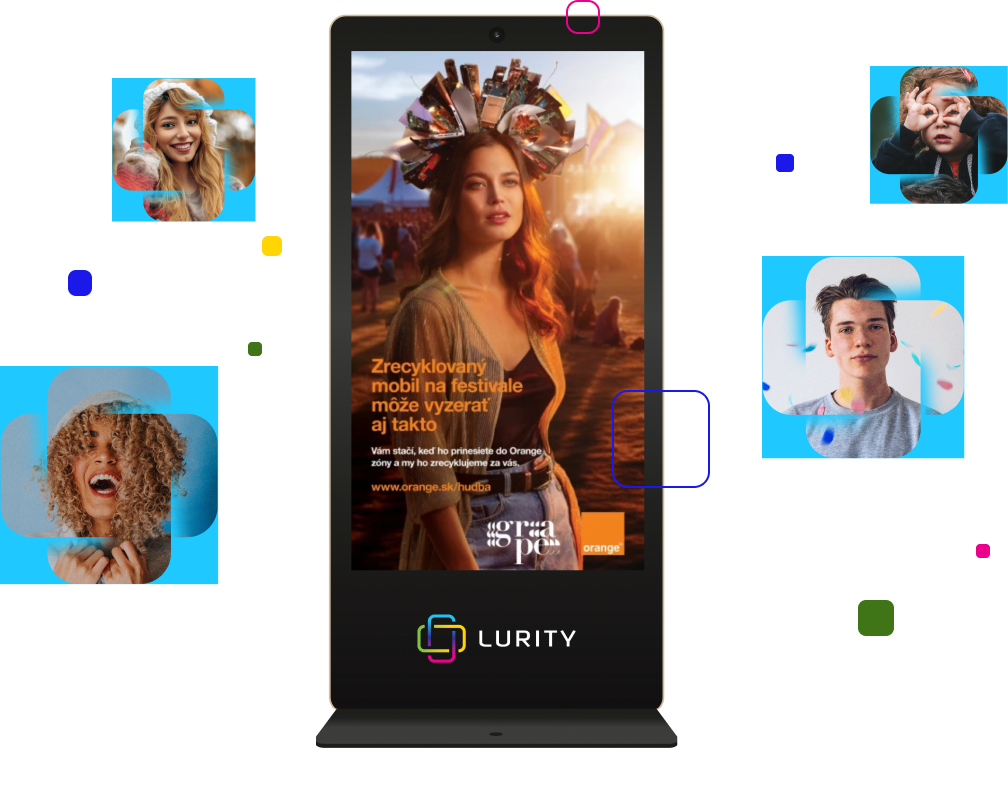Digital Out-of-Home (DOOH) advertising has come a long way. Once reserved for tech-savvy brands and pilot campaigns, it has evolved into a full-fledged, sophisticated media channel—strategically as well as performance-wise. As we look ahead to 2026, the next wave of DOOH transformation is on the horizon. So, what are the key trends reshaping the space?
1. Retail Media & DOOH: Allies, Not Rivals
Retail media is booming—and when combined with DOOH, it creates powerful last-mile advertising zones. In-store screens, entrance displays, smart windows—these aren’t just new formats, they are perfectly timed and context-aware touchpoints.
Lurity already offers high-traffic zones in retail spaces—from parking lots and shopping malls to fitness centers and urban passageways.
2. Programmatic DOOH: Measurability & Transparency
Brands today don’t just want visibility. They want data, KPIs, and ROI. DOOH is going programmatic, with growing expectations for accountability—just like in online campaigns.
Platforms like Place Exchange now offer attribution, frequency control, and cost-per-action metrics. It’s time to stop viewing DOOH as “unmeasurable.”
3. Real-Time, Data-Driven Content
DOOH is no longer static or pre-produced. Dynamic content now adapts to weather, time of day, and even consumer behavior (anonymized).
McDonald's UK ran a campaign for cold drinks that only triggered when temperatures hit 22 °C. Smart, relevant, and highly effective—similar activations could be easily rolled out locally.
Lurity lets clients update visuals within minutes—no printing, no logistics, no delays. Rain in the morning? Sunshine in the afternoon? Your content adapts instantly.
4. Context & Hyperlocal Targeting
DOOH reaches places digital can’t—but it’s even more powerful when it’s locally relevant. Local events? Nearby partners? Specific time windows?
Pet food brand Nulo in the U.S. launched a hyperlocal campaign within an 8 km radius of their retail locations—resulting in a 40% lift in brand awareness.
Lurity gives clients the ability to choose locations and screen networks precisely according to their preferences — always in top spots with high foot traffic.
5. AR, 3D & Interactive Formats: Redefining the Boundaries of DOOH
Amazon Prime Video used 3D DOOH in New York and London to promote a series—creating massive organic reach just from people taking photos and sharing them online.
Industry events like ISE 2026 are expected to be all about AR signage and space interaction. DOOH is no longer just a surface—it’s a gateway to immersive brand experiences.
What Does This Mean for Brands?
DOOH isn’t an “add-on” anymore. It’s a strategic media channel in its own right—one that’s becoming more professional, visible, safe, and less intrusive than many online formats.
Lurity aims to be more than just a provider—we want to be a creative partner shaping new DOOH formats and strategies.
Curious to try DOOH differently? Get in touch. You may not need a huge budget to see a big impact.
Try it effectively



